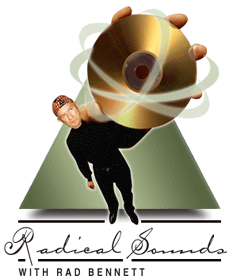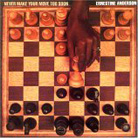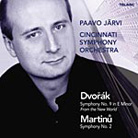 |
| November 1, 2005 Nimbus Records, Alive and Well, Four Times Over During the Golden Age of CD,
Nimbus Records was one of the most respected mainstream audiophile labels. US sales were
good enough that the British company opened an office in Virginia, not far from where I
live. But, as it became harder and harder to float an indie CD company, Nimbus closed up
shop and gave notice that it was going out of business. Apparently, however, it was
defunct for only a short time. Imagine my delight, then, to find it alive and well again. During the Golden Age of CD,
Nimbus Records was one of the most respected mainstream audiophile labels. US sales were
good enough that the British company opened an office in Virginia, not far from where I
live. But, as it became harder and harder to float an indie CD company, Nimbus closed up
shop and gave notice that it was going out of business. Apparently, however, it was
defunct for only a short time. Imagine my delight, then, to find it alive and well again.
At the top of the Nimbus website’s homepage are the catalog links you’d expect to find: Classical Music, Grand Piano, Prima Voce, World Music. But now there’s a fifth one: DVD Music. Nimbus producers are very proud of the fact that they have never made a two-channel stereo recording. If you ever bought a Nimbus CD, you probably noted the statement "Stereo Ambisonic UHJ encoded" printed on the disc. Ambisonic is a four-channel, surround-sound recording system employing a single, central omnidirectional microphone, and UHJ is the matrixing system used to encode an Ambisonic signal in two channels. One had to have a special UHJ decoder to hear Ambisonic recordings in four channels, but the discs were also fully compatible with two-channel playback. (The entire procedure is very well described on the website.) Nimbus now has a very long list -- its entire catalog -- of four-channel Ambisonic master recordings, and its producers have found a way to transfer these to DVD-Audio discs with no loss of fidelity. To ensure that the discs can be played on any DVD player, they have also included, in addition to high-resolution MLP 4.0-channel tracks, high-quality DTS 4.0 and 20-bit/48kHz two-channel tracks. So far nine discs have been released in Nimbus’s Surround yourself with . . . series of DVD-As. Because the DVD-Audio format often permits longer playing times than CD, they have in some cases combined albums, even using double-sided discs when necessary. For me, the three best are Surround Yourself with . . . Schubert, Rakhmaninov, and A Midsummer Night’s Dream. The last, 112 minutes long, includes Mendelssohn’s music performed by instrumental soloists and the Scottish Chamber Orchestra conducted by Jaime Laredo, as well as Shakespeare’s play, with actors from the Royal Scottish Academy. How splendid to hear Shakespeare and Mendelssohn together! The recording is rich and full, placing the actors up front yet free to wander. Occasionally, as in the Transformation Scene, they walk behind the mike, but the rear channels on this and other Nimbus recordings are used primarily to re-create the ambience of the recording venue. The Nimbus producers believe in neither direct sounds coming from behind nor in the use of a center channel. This isn’t much of a problem, given the way Nimbus records with a single-point mike. The phantom center channel is quite good. This is evident in the Rakhmaninov disc, which offers the Rhapsody on a Theme of Paganini, the Vocalise, and the Symphony No.2. These are splendid, lush, thrilling performances, with Tadaaki Otaka conducting the BBC National Orchestra of Wales and pianist John Lill. On the third disc, the Brandis Quartet, with the aid of cellist Wen-Sinn Yang, play Schubert’s C-Major String Quintet and the Quartet No.13 in A Minor ("Rosamunde") in alert and vital readings. The sound on all three discs is much better than that on the original CDs, largely because they can now be heard as conceived: in four-channel surround sound. Other Surround yourself with . . . discs are devoted to the music of Elgar; of Copland, Sousa, and Barber; and of Beethoven (Symphonies Five and Six, performed by Monica Huggett, Roy Goodman, and the enthusiastic, period-instrument Hanover Band). Three additional Surround yourself discs are wonderful discoveries: Caruso, Hindustani Ragas, and Paco Peńa, the last a disc of flamenco music hot as a firecracker. But how, you might ask, can Caruso be in surround? Wouldn’t it be atrocious to remix -- if that were even possible -- these acoustical recordings, some of them now a century old? Here’s what the Nimbus engineers do: They clean up the original 78rpm discs, using a fresh stylus for each side, and play them back on a special horn player (it looks awesome in the photo on the website). The Ambisonic mike picks up the sound acoustically from the horn, rather than as an electronic signal. I normally can’t stand pre-LP recordings, but I found these quite exciting. Moreover, the Caruso disc contains 3 hours and 23 minutes of music. If these releases sell, Nimbus swears there will be more -- a lot more, considering the depth of their catalog. To me, this seems the ideal way to reissue such recordings: in a format that can be played by audiophiles interested in the finest high-resolution reproduction, or by listeners who just want to hear great music in quite acceptable sound. Listen up, Reference Recordings, EMI, and Decca: You have many multichannel masters in your vaults, too. As for new recordings of classical works in multichannel, high-resolution sound, this month brought an embarrassment of riches, along with a nice two-channel surprise from the past.
When I began to collect LPs, back in the 1950s, there was but one recording of this gargantuan work available, a medium-fidelity release that only hinted at its magnificence. Now there are many. Mahler’s Symphony No.8 is scored for eight soloists, choruses, and an orchestra of quadruple woodwinds, eight horns, four each of trumpets and trombones, two harps, piano, a small army of percussion instruments, strings, and organ. These vast forces make it a favorite of audiophiles, and there are already two high-resolution recordings: an SACD conducted by Sir Colin Davis, and a DVD-Audio version led by Riccardo Chailly. The former is a disaster, the latter excellent, with very good soloists. This recording, led by Kent Nagano, beats both, as well as most of the standard-resolution recordings out there. Nagano fully realizes the work’s drama while perfectly interpreting its more lyrical and mystical sections. His musicians respond to his direction with singing and playing that could scarcely be bettered. The engineering team has come through, too -- this is the best recorded of any Mahler 8 out there. The organ is awesome but correctly balanced, the choruses and orchestra are ideally integrated, and the vocal soloists sound as if part of the ensemble rather than sticking out. There are some passages for solo violin in Part II that are beautiful to hear. Usually these are caught with spot mikes and sound too loud. Here, they sound correct in relationship to the huge forces, from which they offer relief. The rear channels are used for ambience and to create a sense of space, while the front channels offer a soundstage that is wide and deep -- big enough to realistically contain the vast numbers of singers and instrumentalists.
This 1981 album was nominated for a Grammy, and it’s easy to hear why. Anderson’s large, warm, golden voice seems right at home with the lyrics of every one of these eight songs, and she’s backed by a dream trio: Monty Alexander on keyboards, Ray Brown on bass, and Frank Gant on drums. The four romp through the dirty blues of "Never Make Your Move Too Soon" and the jubilant "My Shining Hour," but kick into a lower but just as meaningful gear for "What a Difference a Day Made" and "Why Did I Choose You?" Good as those cuts are, the showpieces here are "Old Folks" and "Poor Butterfly," which receive definitive performances. It seems to me that Groove Note producer Ying Tan has done a better job of transferring classic Concord Jazz analog recordings onto SACD than Concord itself has. He has wisely decided to keep the original two-channel configuration and has not drastically re-equalized the master tapes. The sound is honest and pure -- clean, clear, warm, and intimate. The CD layer is better than most, but switch to the SACD layer and the sound has more presence and nuance. If you don’t know this album, you’re in for a treat; if you can play SACDs, you’re in for something very special. Turn the lights down low and listen without any distractions. You won’t want any.
Rarely, a recording of a standard-repertory work will come along that deserves to take its place near the top of a list of time-honored performances. This disc contains such a recording. I was sitting here trying to think of the number of recordings I have heard of Dvorák’s "New World" symphony, and finally concluded that it must be over 50, including good ones (such as those by Fritz Reiner, Bruno Walter, Erich Leinsdorf, Sir John Barbirolli, Karel Ancerl, and Artur Rodzinski) and great ones (István Kertész, Rafael Kubelik). This one, led by Paavo Järvi, joins that short latter group. Järvi has whipped the Cincinnati Symphony, already a good ensemble, into one of the best orchestras in the world. The woodwind playing is particularly wonderful, but no other section is very far behind. Järvi uses this magnificent instrument to create an interpretation of the music that is spot on from beginning to end: lyrical, heroic, poignant, forward -- in short, whatever the particular passage calls for. Martinu’s witty, lyrical, neoclassical Symphony No.2 receives the same loving care and virtuoso execution. The work should be much better known, and this reading is sure to make it new friends. Telarc’s producers and engineers have been trying to get perfect sound from Cincinnati for some time, getting very close to an ideal sound envelope for multichannel reproduction. On this disc they achieve their goal. It could not sound better -- the orchestra is nicely spread from left to right, the balances are perfect, the frequency range awesome. The surrounds give one just the right amount of hall ambience. The sound is alive, with great presence, although the recording is not as close-up as many others. The all-important timpani strokes scattered throughout the “New World” have incredible three-dimensional bite, and the piano and harp in the Martinu’s bustling rhythmic figuration are singularly palatable. This disc is Grammy material for 2005. Show that you recognize a potential winner by making sure you hear it. ...Rad Bennett
Ultra Audio is part of the SoundStage! Network. |
 Mahler: Symphony No.8,
"Symphony of a Thousand"
Mahler: Symphony No.8,
"Symphony of a Thousand" Ernestine Anderson: Never
Make Your Move Too Soon
Ernestine Anderson: Never
Make Your Move Too Soon Dvorák: Symphony No.9, “From
the New World”
Dvorák: Symphony No.9, “From
the New World”